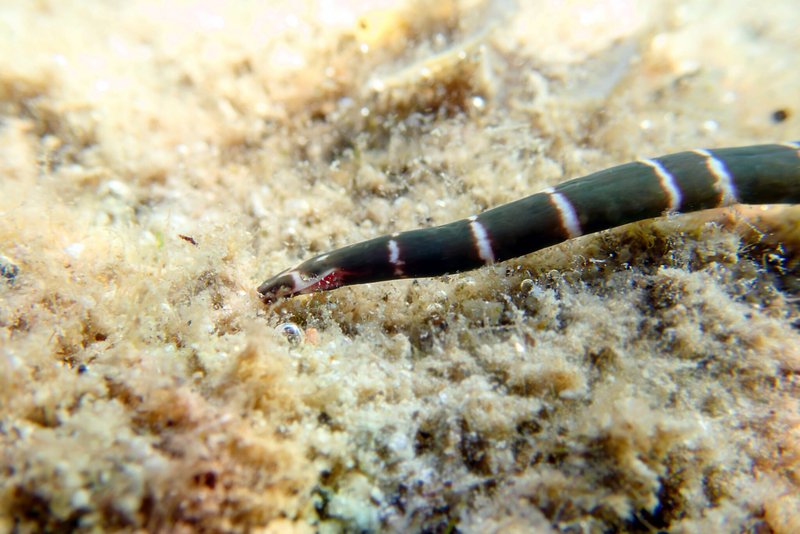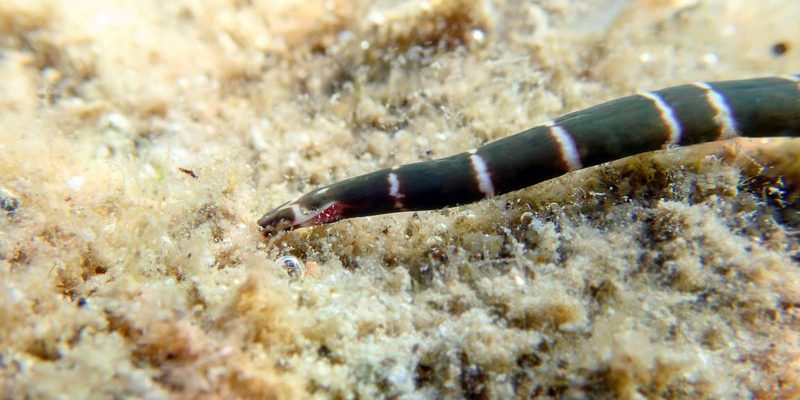
When we talk about competition among predators, it’s essential to think about how different species interact and hunt for food. Ribbon worms, known scientifically as Nemertea, are skilled hunters, using their long, slender bodies to capture prey. But what if a rival predator pops up nearby? Do ribbon worms find themselves in a food fight, or do they have their own niche that helps avoid clashes? Let’s dive into the world of ribbon worms and explore their role in the underwater competition for resources.
What Are Ribbon Worms?
Ribbon worms are soft-bodied creatures with some unique features. They can vary wildly in size, with some growing as long as 30 meters! Yes, that’s over 98 feet—imagine a creature that long slinking through the water or burrowing into the sand. They usually have a flat, ribbon-like appearance and can range in color from dull browns to vibrant greens and yellows.
These worms possess a specialized organ called a proboscis that they use to hunt. With this organ, they can shoot out a sticky thread that ensnares their prey. It’s like watching a magician pull a rabbit out of a hat, only this rabbit is a small fish or crustacean that ends up dinner.
You might think these hunters are fearsome, but their ecosystem is just as competitive as any land-based environment. They have to navigate their surroundings carefully to avoid becoming prey themselves.
The Ecosystem of Ribbon Worms
In their underwater world, ribbon worms often occupy the benthic zone, which is the ocean floor. This area is bustling with life, filled with various creatures that share the same habitat. It’s like living in a crowded neighborhood; everyone’s vying for the same resources.
In this rich environment, ribbon worms typically feed on small fish, crustaceans, and other invertebrates. However, they’re not the only predators in this space. Other species, such as larger fish and even other types of worms, may also be on the hunt for the same meals. The competition can be fierce, and understanding how ribbon worms interact with these other predators helps paint a complete picture of their survival strategies.
You may be asking, “What happens when they come across one another?” Well, in many cases, ribbon worms employ stealth and ambush tactics to thrive. This means they might hang low and wait for just the right moment to strike, avoiding direct competition with faster or stronger hunters.
Do Ribbon Worms Compete for Food?
Absolutely! Ribbon worms do face competition when it comes to finding food, and it can be quite intense. Imagine you’re at a buffet, but everyone else wants the same dish. You’d have to strategize a bit, right? Ribbon worms do something similar in their underwater buffet.
They primarily eat small fish and invertebrates, often competing with organisms like flatworms and even juvenile fish. The challenge lies in not just capturing prey but also avoiding larger predators who might see them as a snack.
Interestingly, their hunting technique—using that proboscis—allows them to catch unsuspecting prey quickly. This ability gives them an edge when competing with other predators who may rely on speed or agility. It’s a balancing act of power and patience.
Strategies to Reduce Competition
So, how do ribbon worms outsmart their competitors? Here are some clever strategies they use:
- Disguise: By blending into their environment, ribbon worms can avoid detection. They often hide beneath rocks and in crevices, making it harder for competitors to spot them.
- Timing: They may hunt during different times of the day compared to other predators. This way, they minimize encounters and increase their chances of finding food.
- Adaptation: Some ribbon worms can alter their diet based on availability. If their preferred meals are scarce, they may switch to eating detritus or smaller organisms, reducing competition.
These strategies not only show their resilience but also highlight their adaptability in a competitive world.
Who Are Their Competitors?
In the rich tapestry of ocean life, ribbon worms have several competitors. Other predators can include:
- Fish: Many fish species, particularly those that inhabit the same zones as ribbon worms, may also compete for small crustaceans and fish.
- Carnivorous Invertebrates: Creatures like octopuses, sea stars, and even other types of worms are potential competitors.
- Crustaceans: Shrimp and crabs also hunt small prey and share the same food sources.
Understanding who their competitors are gives us insight into the pressures ribbon worms face every day. They must constantly navigate this bustling world to hunt effectively while staying off the menu themselves.
How Do Ribbon Worms Avoid Direct Competition?
Despite their challenges, ribbon worms have a few tricks up their sleeves to avoid direct competition with predators. One primary strategy is their selective feeding behavior. They often target specific types of prey that other predators might bypass.
You might find that ribbon worms tend to feed on smaller or less energetic organisms, which means they’re often in a different part of the food web than more aggressive hunters. This specialization allows them to thrive without clashing head-on with larger competitors.
Additionally, they can inhabit various niches. Ribbon worms tend to burrow or hide in crevices where larger predators can’t reach. Think of it as finding a cozy spot in a crowded café where you can enjoy your sandwich without someone bumping into you every minute. It’s their way of claiming a space that’s less contested.
The Role of Environment
The environment plays a significant role in how ribbon worms avoid competition. They thrive in regions with diverse habitats, like muddy or sandy sea floors, where they can easily hide and ambush prey. Different areas provide varying levels of competition, meaning ribbon worms can often find less populated spots to hunt.
Moreover, the overall health of their ecosystem, including water quality and availability of shelter, can impact their success. Healthy habitats allow for a more varied food supply and reduce direct competition.
Ribbon worms are remarkable creatures that navigate a world filled with competition and challenges. Their unique hunting methods, adaptability, and strategies for avoiding direct conflict with other predators showcase their survival skills.
While they do compete for food with various marine life forms, their clever approaches help them maintain their space in the food web. Understanding how they fit into their ecosystem not only piques our curiosity about ribbon worms but also highlights the intricate balance of life in the ocean.
So, the next time you hear about these fascinating creatures, remember they are not just ribbons of mystery but vital players in the dance of life beneath the waves.

